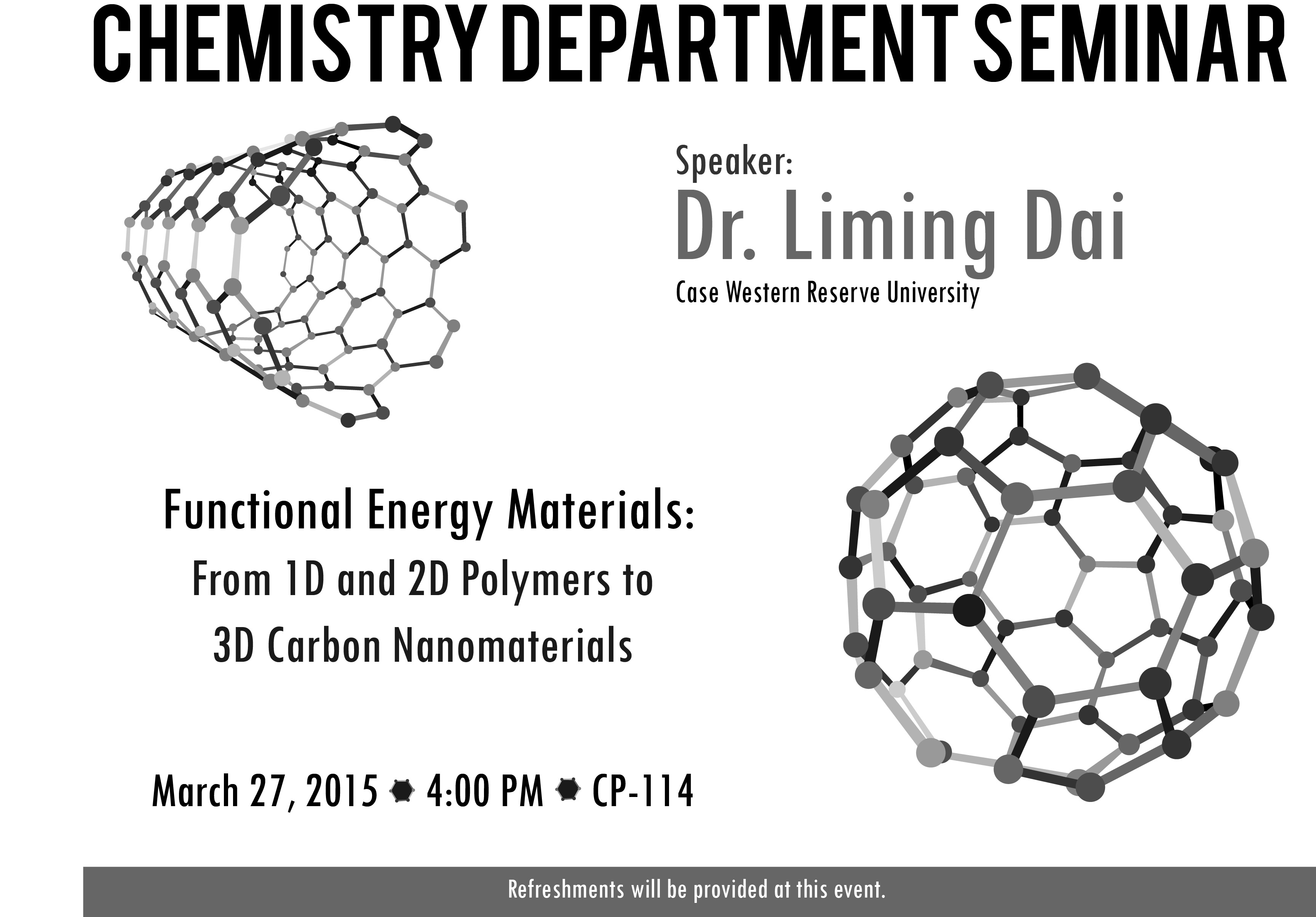Analysis and PDE Seminar
TITLE: Scattering Resonances on Hyperbolic Manifolds as a Model of Chaotic Scattering
ABSTRACT: Scattering resonances represent "almost standing waves" in a scattering system which have a nite lifetime as measured by energy decay in a nte region. In this survey talk well review the basics of scattering theory on geometrically nite, real hyperbolic manifolds and their role as models of open chaotic systems. As such they have attracted the interest of both mathematicians and physicists. Work to be discussed includes the work of Patterson and Perry and papers by Borthwick, Guillope-Zworski, Guillarmou, Naud, and others. Real hyperbolic manifolds provide a useful "laboratory" for scattering because their symmetries allow for the use of powerful methods from the theory of automorphic functions, dynamics, and the theory of Fuchsian groups. We'll discuss the connection between scattering resonances and Helberg's zeta function for a hyperbolic surface, and in turn the connection between Selberg's zeta function and the Ruelle zeta function from dynamical systems. Through this connection one can uncover close relationships between the Hausdor dimension of the trapped set for geodesic ow on the one hand, and the distribution of scattering resonances on the other.
Algebra and Geometry Seminar
Religion, Identity and Competing Visions of Islam in Post-Soviet Central Asia
For several decades, studying Islam in Central Asia meant beginning with questions, analytical categories, and conceptual frameworks rooted in Soviet and Russian studies; this approach, combined with a lack of basic understanding of the historical experience of Central Asian Muslims prior to the Soviet era, led to host of misconceptions surrounding the character of Muslim religious life in the Soviet era, the impact of Soviet policies and realities, and trends in the renegotiation of religious identities in the post-Soviet age. Recent years have brought, in some circles, growing awareness of the need for approaches drawn from Islamic studies and from a historically-grounded understanding of the history of Muslim religiosity in Central Asia. This lecture will discuss some of the misconceptions rooted in the ‘Sovietological’ approach to Islam in the region, and the lessons to be drawn from viewing the region through the lens of Islamic studies, with a particular focus on the ways in which religiosity was manifested in Soviet times, and on the ways in which religiosity shaped or interacted with notions of ‘national’ identity.
Department of English Awards Day
For more information on Awards Day, visit http://english.as.uky.edu/english-department-awards-day-2015
First Annual Biology 4th Year Symposium
Math Club Talk
When can integers be written as the sum of squares?
From Pythagoras, to Fermat, to Legendre, mathematicians have been interested in representation of integers by sums of squares. Legendre's beautiful 4 square theorem states that any positive integer can be represented as the sum of 4 squares. For example 1+4+4+9=18. One easily checks that 7 cannot be written as the sum of 3 squares. How well can we do with two squares?
Carter G. Woodson Lecture Series: Steve Davis
Please join us for the last Carter G. Woodson Lecture of the semester. Steve Davis, Assistant Professor in the Department of History, will present a talk titled "New Perspectives on Long Walk to Freedom: Nelson Mandela's Life Story and the Uses and Misuses of Political Biography".
Friday, April 3 at noon at the MLK Center.
Applied Math Seminar
Title: Convexity, star-shapedness, and multiplicity of numerical range and its generalizations
Abstract: Given an n×nn\times n complex matrix AA, the classical numerical range (field of values) of A is the following set associated with the quadratic form:
W(A)={x*Ax:x*x=1,x is a complex n-tuple} W(A) = \{x^*Ax: x*x=1, x\,\text{ is a complex }\, n\text{-tuple}\}We will start with the celebrated Toeplitz-Hausdorff (1918, 1919) convexity theorem for the classical numerical range. Then we will move on to introduce various generalizations and we will focus on those in the framework of semisimple Lie algebras and compact Lie groups. In our discussions, results on convexity, star-shapedness, and multiplicity will be reviewed, for example, the results of Embry (1970), Westwick (1975), Au-Yeung-Tsing (1983, 84), Cheung-Tsing (1996), Li-Tam (2000), Tam (2002), Dokovic-Tam (2003), Cheung-Tam (2008, 2011), Carden (2009), Cheung-Liu-Tam (2011) and Markus-Tam (2011). We will mention some unsolved problems.
Chemistry Department Seminar
----------
Dr. Liming Dai of Case Western Reserve University will be presenting a seminar titled Functional Energy Materials: From 1D and 2D Polymers to 3D Carbon Nanomaterials.
Abstract: With the rapid increase in the global energy consumption, there is a pressing need for clean and renewable energy alternatives. Polymers have been traditionally used as electrically insulating materials: after all, metal wires are coated in plastics to insulate them. Various conjugated macromolecules with alternating single and double bonds can now be synthesized with the processing advantages of plastics and the optoelectronic properties of inorganic semiconductors for optoelectronic device applications, including polymer photovoltaic cells [1].
Faculty Host: Dr. Doo Young Kim


